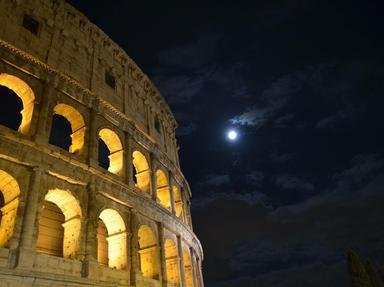Quiz Answer Key and Fun Facts
1. Who had ruled Palestine as a vassal king of the Romans from 37 BC to 4 BC? His kingdom was brought under Roman rule as the province Iudaea in 6 AD.
2. Some point the finger at Roman procurator Gessius Florus as the cause of the definitive start of Jewish revolt in the 60s AD. In which city, the capital of the Roman province Iudaea, did he hold office?
3. Herod Agrippa II, who ruled scattered Jewish territories in north-east Palestine, was attacked as a pro-Roman collaborator after insisting to the Jewish community that even Romans such as Florus should be obeyed. The Jewish community was then split in two. Which of the following led the pro-revolution group, while his father led the pro-Herodians?
4. Anti-Jewish pogroms across Palestine followed the revolutionary coup in Jerusalem. Cestius Gallus, the governor of Syria, marched at the head of 30,000 troops, attacking various cities to crush the revolutionaries before trying to take Jerusalem. Unable to take the Temple Mount, he withdrew his army. Where were they ambushed? The place gave its name to the resulting battle in which around 6000 Roman troops were killed.
5. The second aristocratic government formed in 66 AD following battle with Gallus's army even minted their own coins, inscribed "Year 1" (66 AD) to "Year 5" (AD 70) of the liberation.
6. Which of these Jewish commanders is our main source for much of the Jewish Revolt of 66-73 AD? He surrendered to Rome after the Siege of Yodfat (Jotapata) and later became a Roman citizen.
7. The Ananus government suffered defeat after defeat. In winter 67 AD, it was overthrown by a revolution by the popular militias who then turned on each other in civil war. Which leader in 69 AD led an army of bandits through Idumaea and then back to Jerusalem to challenge the radical militias still there?
8. Which future emperor was the Roman commander during the Siege of Jerusalem in 70 AD?
9. After the fall of Jerusalem, Rome staged a military triumph. Who was brutally murdered at the end of the procession, to the glee of Roman citizens?
10. Which area is famous as one of the last holdouts of the Jewish revolt? The last stronghold of the rebels, it was besieged around 73-74 AD.
Source: Author
reeshy
This quiz was reviewed by FunTrivia editor
bloomsby before going online.
Any errors found in FunTrivia content are routinely corrected through our feedback system.
